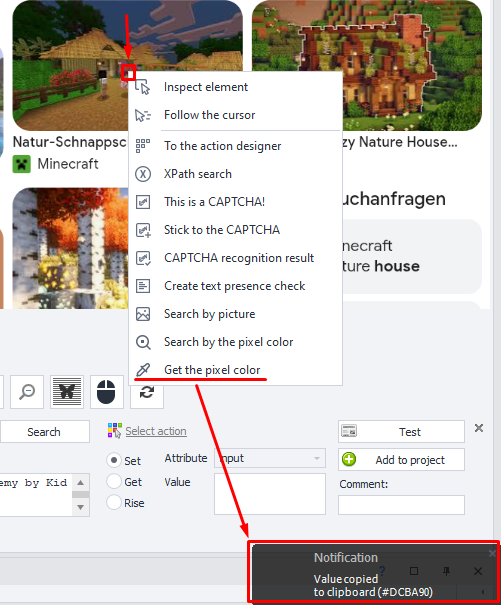Device Window
Getting Started
In this window, you can interact with both the emulator and a real device.
When you launch ProjectMaker, the device window will look like this:
To get started, you need to click Run Device. If Recording is enabled for the project, two actions will be added to the actions canvas: Select Device and Start/restart Device.
Window Components
This is what the window looks like after a successful device launch:
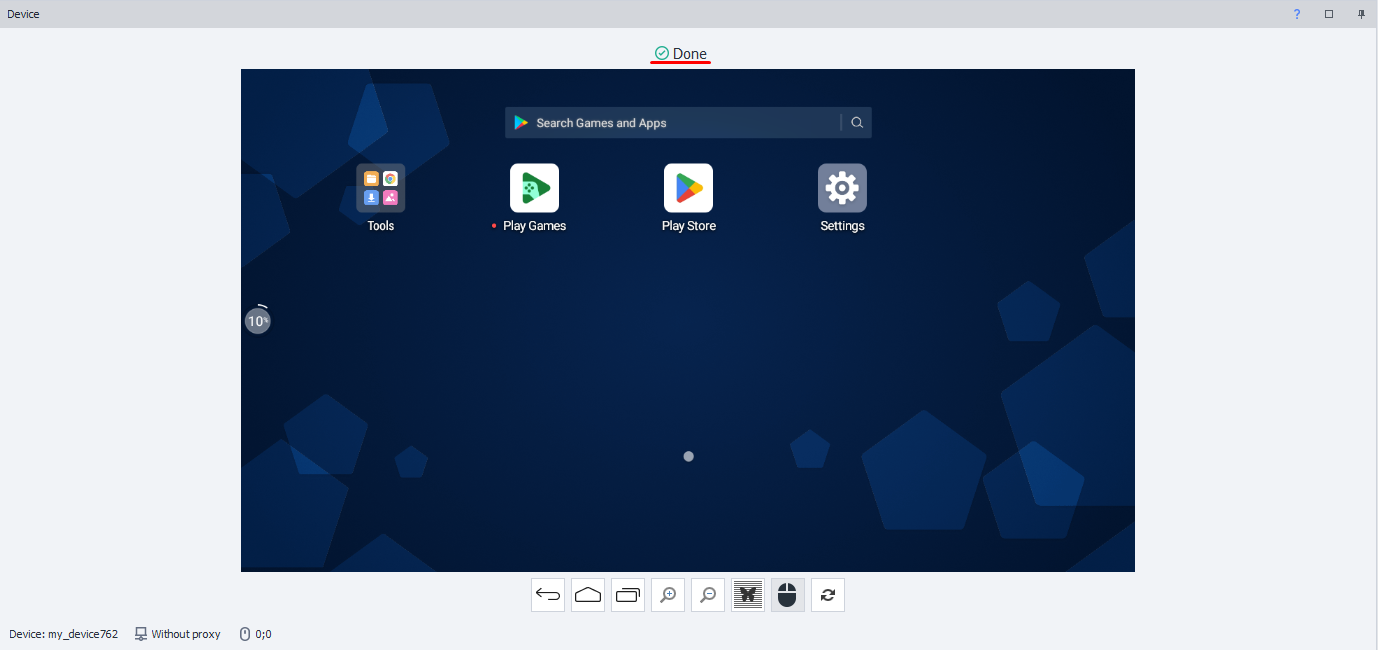
Here, you can interact with the device directly: click, swipe, open apps—everything you do will be reflected. And if recording is enabled, these actions will also show up on the canvas as corresponding actions.
Emulator Control Buttons
| Button | Description |
|---|---|
| Go back to the previous screen. | |
| Return to the home screen. | |
| Show recent apps. | |
| Zoom in* | |
| Zoom out* | |
| Close part of the image. Used for testing image search. | |
| Start recording mouse movements |
You can also zoom by double-clicking the mouse wheel in the emulator window while holding Ctrl.
Current Device/Emulator Name
This is the device that's currently active.
Configured Proxy
Shows the currently set proxy.
Mouse Coordinates
If the cursor is inside the device window, the current coordinates (X, Y) will be shown here.
You can use these coordinates in the Swipe Emulation and Touch Emulation actions.
Context Menu
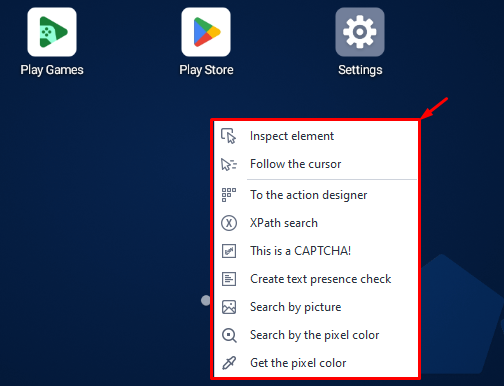
Right-click anywhere in the window to open the context menu.
Available Buttons:
- Clear Text
Lets you clear everything in an input field. If recording is on, the Keyboard Emulation action will be added to your project with this content:{AndroidKeys.CLEAR} - Set Value from Profile
Lets you set an input field value from the project's Profile. If recording is on, a Set Value action with the selected profile macro will be added. - Set Variable Value
Lets you set an input field value from a user variable. If recording is on, a Set Value action with the selected variable macro will be added.
- Inspect Element
Opens the Element Properties window for a closer look at the element. The chosen element will also be highlighted in the Element Tree window. - Follow the Cursor
When turned on, the element under the cursor will be highlighted, and its properties will show up in the Element Properties Window.
Example.
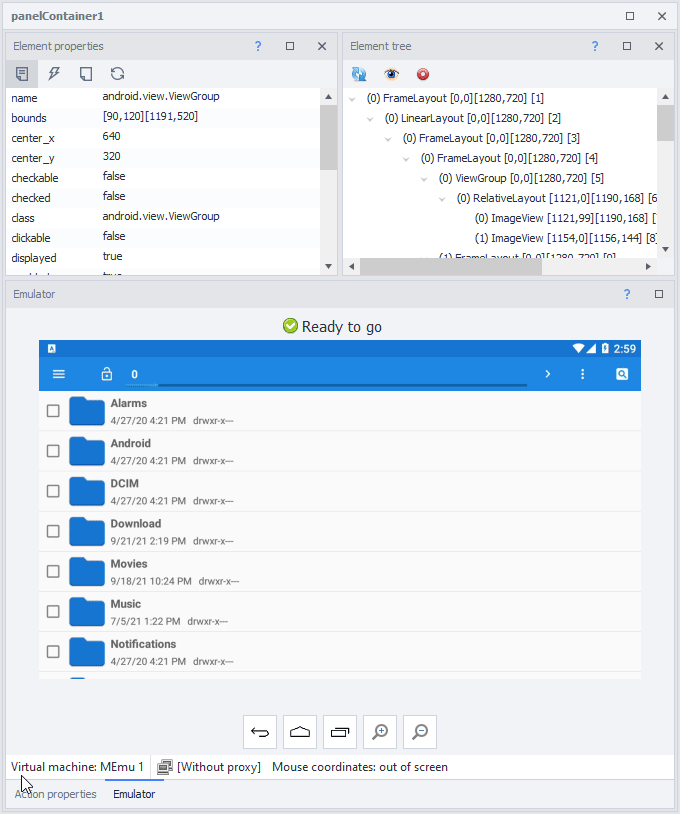
- To the Action Designer
Sends the element to the Action Builder. - xPath search
Analyzes the element on the page and shows info in xPath format.
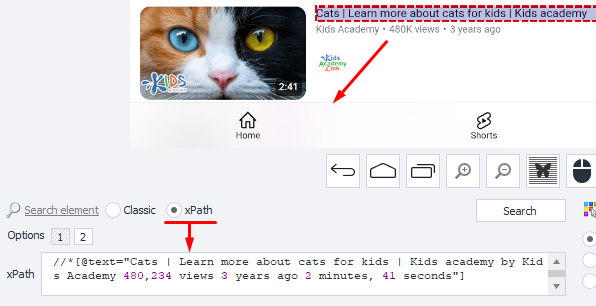
- This is a CAPTCHA!
Lets you mark the image as a captcha and send it either for manual solving or with a special module (for example, CapMonster.Cloud).
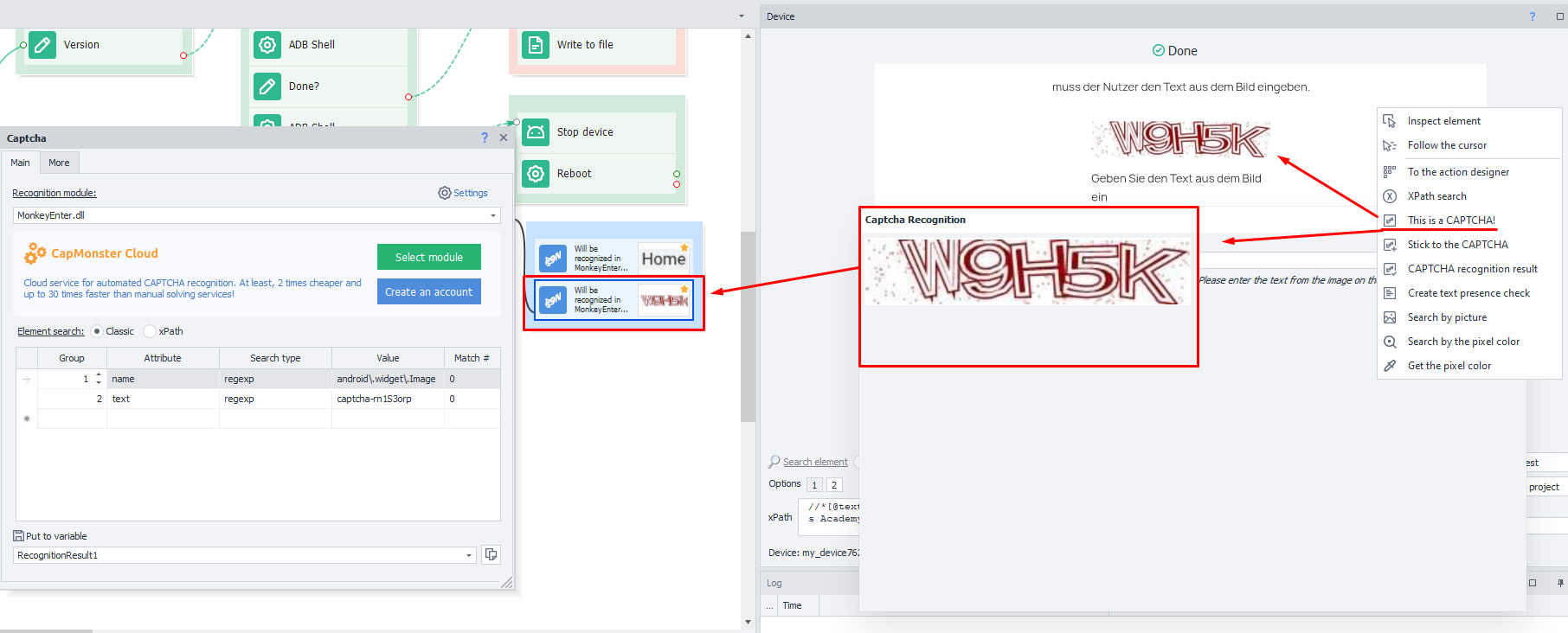
- Stick to the CAPTCHA
Lets you combine multiple images into one and send the whole thing for captcha solving. - CAPTCHA recognition result
Enters the captcha result into the field and, if Recording is on, adds a Set Value action. - Create text presence check
Lets you check for specific text. Enter the text in the input window, then a special action will be created where you can set extra search parameters.
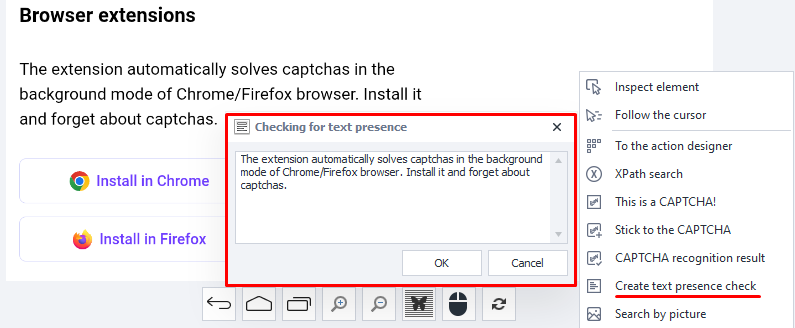
- Search by picture
Searches by the selected image. A window opens for you to adjust the search settings.
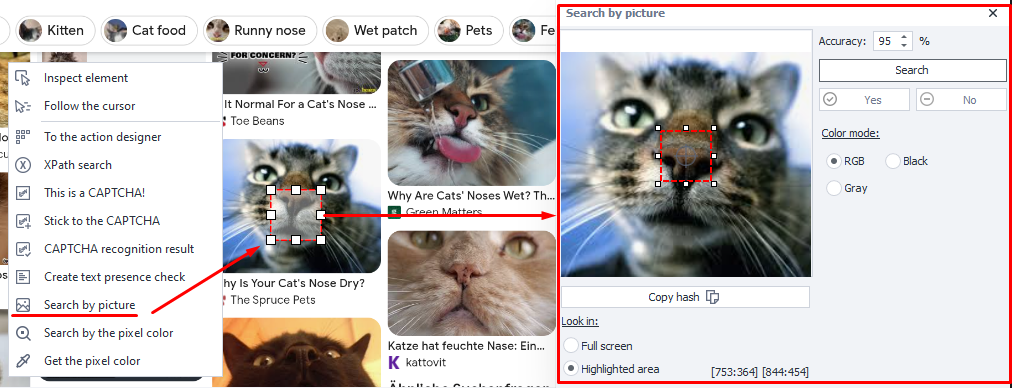
- Search by the pixel color
This action allows you to find a pixel by the specified HEX color code within the selected area or across the entire device screen.
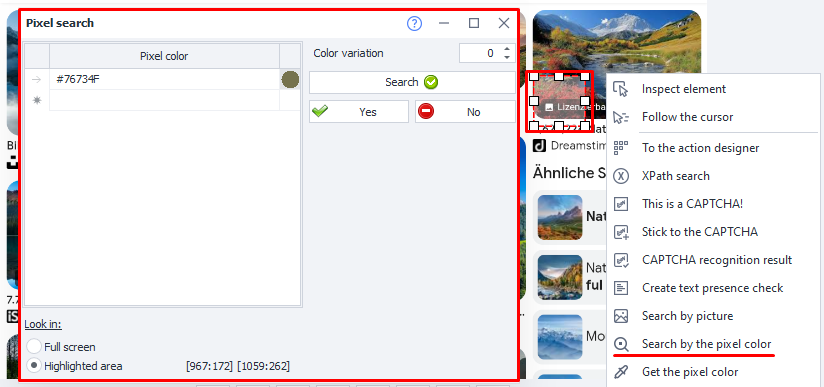
- Get the pixel color
Allows you to copy the HEX color code of the selected pixel to the clipboard.
